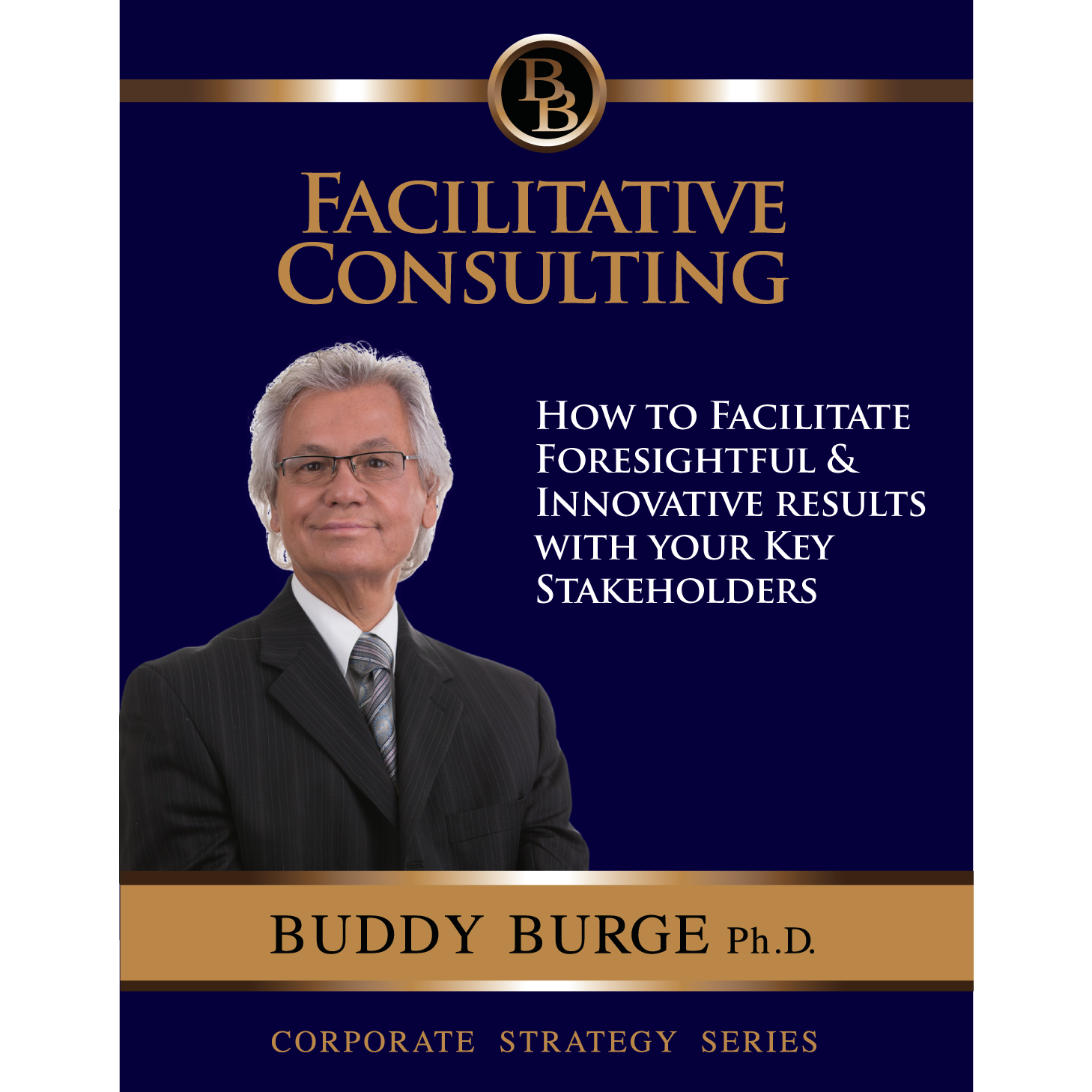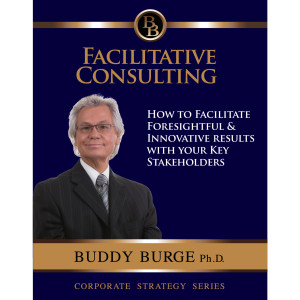
The following excerpt is taken from “Facilitative Consulting”
Facilitative Consulting Elements, Assumptions, Goals and Roles
In the first two articles on Facilitative Consulting we detailed its’ four ever present element and its’ four assumptions
In this section we will detail the three consultant goals.
The Three Consultant Goals
Goal Number One: To Establish a Collaborative Relationship
There are two reasons for consultants to strive for collaborative relationships with their clients. One is that a collaborative relationship promises maximum use of people’s resources-both the consultant’s and the client’s.
It also spreads the responsibility for success or failure and for implementation, and it’s a nice way to work.
The second reason for consultants to act in a collaborative way is that, knowingly or not, they are always functioning as models of how to solve problems.
The message contained in the way consultants act is much more powerful than their words.
To talk collaboration and behave differently is confusing and self-defeating.
Goal Number Two: To Solve Problems so They Stay Solved
It is possible to act in a way that only the immediate problem gets solved.
If there is a problem with employees coming late to work, for example, actions can be taken to prevent it.
- Station the boss at the door in the morning with a pencil and a black book, or have room checks at starting time each morning
- Or issue a policy statement about lateness
- Or have meetings with employees about the need for punctuality.
This might reduce the problem of lateness.
But it does not mean that the managers have learned anything about how to solve similar problems and thus become more competent.
The consultant’s alternative is to work with line managers at another level of analysis.
To Solve Problems So They Stay Solved: An Example
For example, managers may not see lateness as being a symptom of discontent, or a symptom of inexperienced supervision at the first level, or any of the other possible root problems lateness could be signaling.
Also, it is possible the consultant is being asked to solve problems line managers should be confronting themselves.
Teaching the managers skills in solving the problem themselves next time requires that they understand that disturbing employee behavior is a symptom of more basic problems, and that they should not ask others to confront problems that belong to them.
Goal Number Three: Resolve both the Business Problem and Relationships
Each situation has two elements:
- The technical/business problem that has to be resolved
- And the way people are interacting around that problem.
In most organizations, primary attention is given to the technical/business problem.
Consultants are in a unique position to address the people or process issues productively.
As third parties, they have no vested interest in the process issues-no power to gain or lose, no territory to expand or contract, no budget to increase or decrease.
Consultants can urge attention to the process issues, and line managers will listen to them in a way in which they would not listen to each other.
Developing Client Commitment: A Secondary Goal of Each Consulting Act
Consultants or staff people have no direct control over implementation.
They are quite dependent on line managers for producing results.
The line manager ultimately will decide whether to take action, and this choice will be based on how internally committed the line manager is to the concepts the consultant is suggesting.
So the consultant needs to be very conscious of building internal commitment all during the consulting process.
Effective consulting skills are those steps and behaviors that act to create internal commitment in managers.
Each of us has seen examples of consulting projects where the project or report ends up on a shelf, despite its cost and relevance.
When this happens, it often means that somewhere along the line, the consulting process lost the managers who had to decide to use the results of the project.
Client Commitment is the Key to Consultant Leverage and Impact.
In Facilitative Consulting, you move through the steps of a consulting process designed to build commitment and reduce the chance of losing the client along the way.
Client commitment is the key to consultant leverage and impact.
We can’t order the client to take action.
Sometimes we decide to go to the client’s boss and urge him or her to direct the client to use our recommendations, but this is a risky proposition-particularly if we want to stay in the good graces of our client.
So our impact is determined by the client’s commitment to our suggestions.
Building this commitment is often a process of removing obstacles that block the client from acting on our advice.
We may cling to the fantasy that if our thinking is clear and logical, our wording is eloquent, and our convictions are solid, the strength of our arguments will carry the day.
Clear arguments do help.
But they are not enough.
The client and his or her colleagues will experience doubts and dilemmas that block commitment.
In the first two articles on Facilitative Consulting we detailed its’ four ever present element and its’ four assumptions
In this section we described the three consultant goals.
In the next and last article on being a consultant, we will assess the three consulting roles.
For more on this topic, we recommend the following | |
 | Facilitative ConsultingHow to Facilitate Foresightful and Innovative Click Here For Video and Full Description If you found this article useful |

![CropperCapture[381]](http://buddyburge.com/wp-content/uploads/2014/02/CropperCapture381-300x228.png)
![CropperCapture[382]](http://buddyburge.com/wp-content/uploads/2014/02/CropperCapture382-300x173.png)
![CropperCapture[383]](http://buddyburge.com/wp-content/uploads/2014/02/CropperCapture383-300x227.png)
![CropperCapture[384]](http://buddyburge.com/wp-content/uploads/2014/02/CropperCapture384-254x300.png)
![CropperCapture[385]](http://buddyburge.com/wp-content/uploads/2014/02/CropperCapture385-300x240.png)
![CropperCapture[386]](http://buddyburge.com/wp-content/uploads/2014/02/CropperCapture386-300x192.png)
